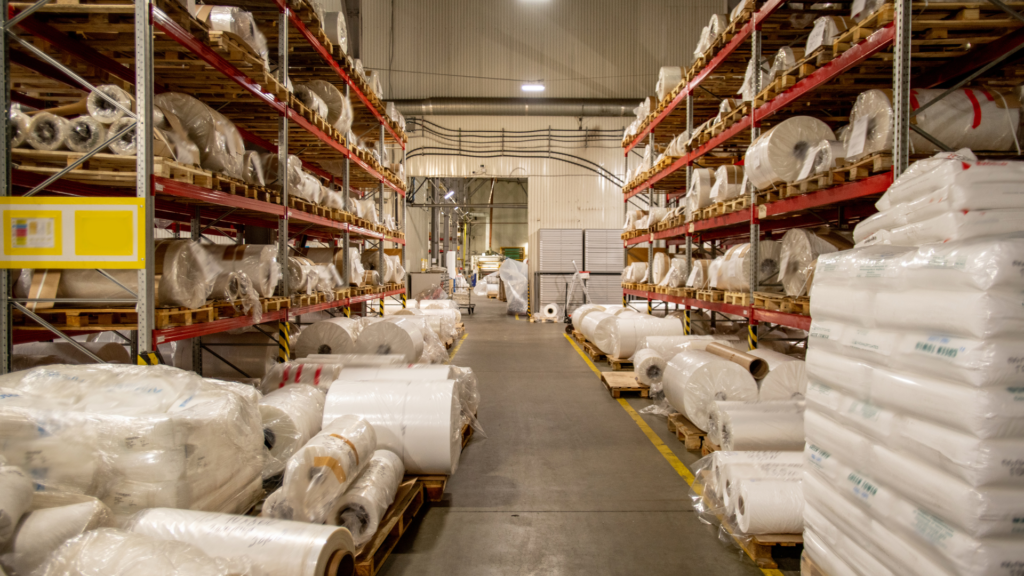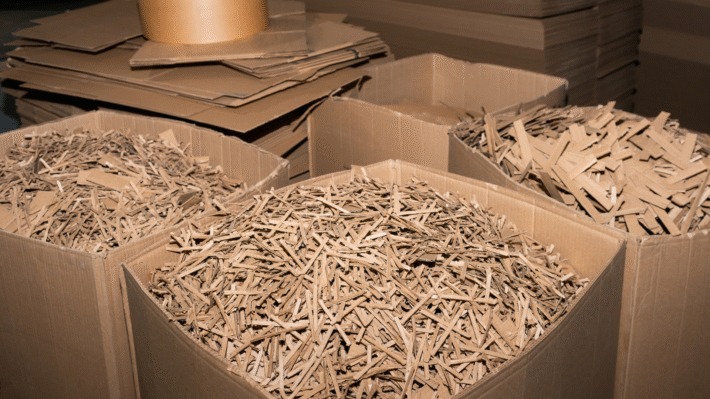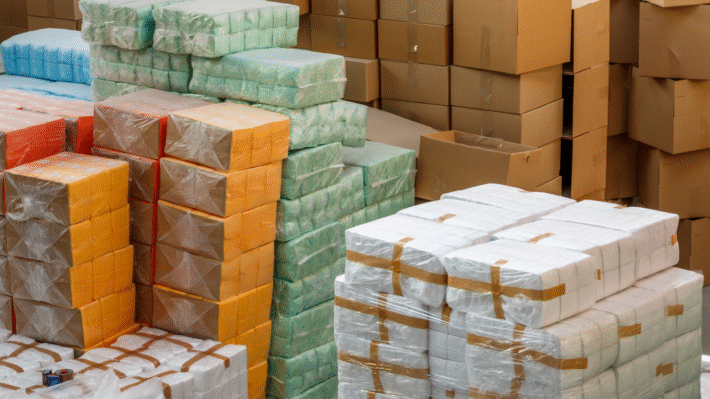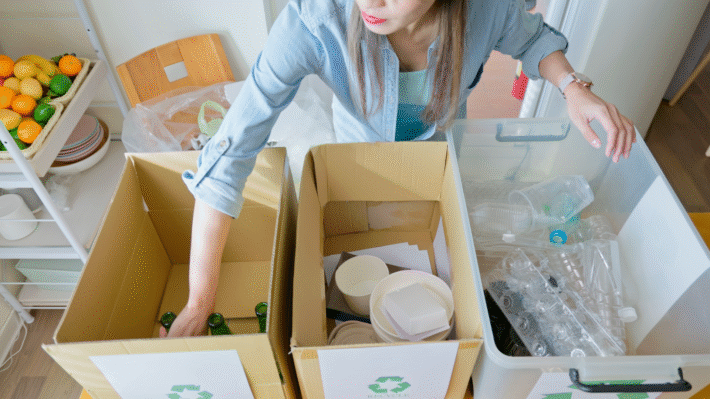Creating Circularity in Bio-Based Chemical Production for a Greener Future

Did you ever wonder how we can make our world greener while keeping industries running? The push for decarbonization and sustainable development means we need smart alternatives to fossil fuels. Fermentation offers an exciting pathway. Imagine producing the chemicals we use every day from renewable resources instead of fossil fuels. With fermentation-based bioprocesses, it’s possible!
In this article, we’ll dive into how fermentation can create a circular chemical economy. From using food waste to capturing CO₂, these processes bring both hope and practical solutions. Discover the role fermentation plays in tackling economic, environmental, and technological challenges, paving the way for a sustainable future. Get ready to explore how this innovation is changing the chemical industry for the better.
The Need for Change in Chemical Production
The world is changing. With more people than ever speaking up about the need to protect our planet, there’s a buzz in the air about shifting away from fossil fuels. But why do we rely on fossil fuels in the first place?
Why Rely on Fossil Fuels?
For ages, fossil fuels have powered our world. They’re used to make energy and lots of other things we use daily. Yet, this reliance on fossil fuels has led to big problems.
Understanding the Traditional Supply Chain
Think about a simple process: you take fossil fuels, use them to make stuff, and then throw away what’s left. This is like having a never-ending chain of taking and using. We call this the traditional supply chain. But here’s the catch: fossil fuels don’t grow back. Once we use them, they’re gone for good.
Environmental and Social Impacts
The way we use fossil fuels harms the Earth. When burned, they release gases that can warm our planet. This warming can change weather, melt ice, and harm animals. There’s also an impact on people. The places where fossil fuels are dug up can be unsafe and affect people’s health.
Embracing a Circular Economy
Now, imagine a different way. What if we could use things without wasting them? This brings us to a circular economy.
Turning Waste into Resources
In a circular economy, we see waste differently. Instead of throwing things away, we turn them into resources. This means making use of leftovers in creative ways. By doing so, we reduce waste and help the environment.
Designing for Reuse and Recycling
One big idea of a circular economy is making things that can be fully reused or recycled. If we design products with this in mind, we can keep materials in use for a long time. This approach not only helps nature but also creates jobs and benefits the community.
In summary, there’s a clear need for change in how we produce chemicals. Moving away from fossil fuels and towards a circular economy can be a game-changer. Let’s rethink and rebuild for a better tomorrow!
Fermentation: A Key Player
Fermentation is a powerful process when it comes to creating renewable chemicals. Let’s take a closer look at how this process works and why it’s so important today.
What is Fermentation?
Basics of Fermentation Processes
Fermentation is a process where tiny living organisms, like bacteria and yeast, convert sugars into other products. You might have seen this with things like bread or yogurt. In chemistry, we use it to make useful chemicals instead of food! These tiny creatures work really hard in environments that are often free of oxygen to give us what we need.
Microbial Cell Factories
Think of microbes like little factories. They take in sugars or waste and convert them into valuable chemicals. We often use clever tricks like synthetic biology to make them super efficient at this. They’re like tiny workers that never stop, creating everything from biofuels to medicines.
Benefits of Fermentation for Chemical Production
Fermentation is not just fascinating—it’s incredibly useful for making chemicals that you use every day!
Sustainable Feedstocks
With fermentation, we can use sustainable feedstocks like plants or even waste materials. This means we don’t have to rely on digging up fossil fuels from the Earth. Instead, we use things that grow back quickly or waste that would otherwise be thrown away.
Diversified Chemical Outputs
The magic of fermentation doesn’t stop at creating one thing. It can make different diversified chemical outputs that help us in many ways. From making ethanol for fuel to creating building blocks for plastic, fermentation is versatile and helps keep our world going strong.
This process is friendly to both the environment and the economy, paving the way for a future where chemicals don’t hurt our planet. With fermentation, the possibilities feel endless!
Designing a Circular Supply Chain
Let’s dive into the idea of a circular supply chain and what makes it special. Instead of just using things and throwing them away, we can keep them in use longer and give them new life. This approach is like having a never-ending loop, where everything gets used again and again.
Innovative Inputs and Outputs
In a circular supply chain, the way we think about what goes in and what comes out is different. We need smart ideas to make the most out of the resources we have.
Using Waste Biomass
Waste biomass is like leftover plant stuff that we can use again instead of throwing it away. Imagine if your leftover food scraps were used to grow yummy new plants! By using waste like cornstalks or even scraps from making food, we don’t need to rely just on usual materials.
Turning trash into treasure means we can grow and create new things from leftovers. Not only do we reduce waste, but we also cut down on using more of the Earth’s resources.
Creating Biodegradable Products
Next up, let’s talk about making products that can break down naturally. Imagine if everything we threw away just dissolved back into nature without hurting it. That’s what biodegradable products do.
Creating things like biodegradable cups or packaging means they can return to the soil. This helps the environment stay healthy and happy. By designing with nature in mind, we can make sure our products return to the Earth safely.
Technology and Logistics for Circularity
Now comes the cool tech part. Technology plays a big role in making the circular supply chain work smoothly. We need systems that help things go round without a hitch.
Decentralized Production Systems
Think of decentralized production systems like little local factories that make products. Instead of one big place making everything, we have lots of smaller places. Why’s this good? Because each small factory can use local resources, like nearby waste, to make the things we need.
This idea helps cut down on moving stuff far away, which saves energy and reduces pollution. Plus, it can make communities stronger by using local resources and creating jobs nearby.
The Role of Digital Tools
Lastly, digital tools are like the brains behind the operation. Tools like computers and smart sensors help manage everything in a circular supply chain.
Imagine using an app that tells you the best way to use your leftover materials. Digital tools help us keep track of what we have, where it’s needed, and when it should move along the chain.
By using smart technology, we can plan better and make sure nothing gets wasted. This makes for a supply chain that’s efficient and eco-friendly.
Overcoming Challenges
Creating a circular bio-based chemical production supply chain is not without its hurdles. We have to tackle both technical and economic barriers while dealing with policy and regulatory challenges. Let’s take a closer look at these obstacles and how we might overcome them.
Technical and Economic Barriers
Addressing Feedstock and Processing Issues
One of the biggest challenges in shifting to bio-based chemical production is finding the right materials to use. We call these materials feedstocks. Think of feedstocks as the stuff that goes into the process to make the end product. Using food waste, agricultural residues, or even wood chips might sound simple, but they all behave differently. This can make the job complicated.
These materials need pretreatment so they can be used efficiently. Pretreatment gets them ready by breaking them down into parts that can be turned into chemicals. We need the right tools to do this quickly, without wasting resources.
Achieving Market Competitiveness
If you want to make a profit, your product needs to compete with others on the market. That’s a big task for bio-based products. The usual chemical producers have been around for a long time and have their costs figured out. To catch up, we need to make bio-based products at a price people are willing to pay.
Innovation plays a key role here. Developing new methods to make production faster and cheaper will help. Also, building strong supply chains can lower delivery costs, making products more appealing to everyone.
Policy and Regulatory Hurdles
Navigating Standards and Approvals
Making and selling any chemical products requires following a strict set of rules. These are called standards and approvals. Getting all the right permits can be tricky. Sometimes, the current laws are not clear about how to treat bio-based chemicals.
To get these approvals, companies may need to work closely with government bodies. Explaining how the products are safe and benefit the environment helps speed up this process.
Encouraging Green Policies
Governments everywhere play a big role in shaping what kinds of energy and products we use. Policies backed by scientific facts can help everyone make smarter, greener choices.
The right policies can encourage companies to invest in bio-based alternatives. Things like tax breaks, subsidies, and grants are tools that encourage the development of sustainable technologies. When laws favor greener practices, everyone benefits – the environment, businesses, and consumers.
Remember: Shifting to bio-based alternatives can make a difference, but it requires tackling many hurdles. Working through these challenges makes way for a healthier planet and a more sustainable future.
Accelerating the Transition
Making a change in the chemical industry isn’t easy. But with the right innovations and partnerships, we can speed up the shift toward a circular economy. This means using less fossil fuel and more bio-based alternatives. Let’s explore how to give this transition a boost.
Supporting Innovations and Partnerships
Role of Startups and Academia
Startups and schools are like the engine that pushes new ideas. Startups are quick and full of creative ways to make things better. They can think outside the box and come up with smart solutions. Schools and universities help by providing the research and the brainpower needed to make these ideas a reality. They work together to create better tools and methods in using fermentation for chemical production.
For example, many tiny companies are using science to turn plants and waste into important chemicals. Schools help by doing studies and tests to see how these ideas work. When startups and universities team up, they can make magic.
Industry Collaborations
Big companies can’t do everything alone. They need to work with other companies to share ideas and resources. This is called industry collaboration. When companies join forces, they can make the supply chain strong and more sustainable.
By joining forces, they can share new ideas and make fermentation-based solutions work even better. Instead of competing, they work together to make big changes happen faster. This way, using less fossil fuel and more renewable sources becomes possible. It’s like building a big team where everyone helps each other win.
Financial and Consumer Strategies
Financing Green Initiatives
Making these changes needs money. But not just any kind of money – we need to invest smartly in green projects. People use tools like green bonds and public-private partnerships to gather funds. These tools help gather money for projects that are good for the planet.
Fancy words aside, this means getting money from people who want to help the earth. By collecting money in a smart way and using it well, they can support new projects that aim to reduce waste and help the environment. Banks, governments, and companies can work together to make this happen faster.
Engaging Consumers
People (or consumers) have a powerful voice, and they can push companies to make Earth-friendly products. How? By choosing to buy from companies that care for the planet, they can make a difference. They can also ask for eco-friendly certificates or learn more about how products are made.
Storytelling is one way to engage consumers. When companies share stories about how they help the earth, consumers feel good about their choices. Certifications and rewards for choosing green products make choosing better for the planet more appealing. Good stories and effective marketing can nudge people to pick cleaner options, thus driving demand for bio-based chemicals.
By supporting innovations and engaging smart strategies, we can make a cleaner and greener world sooner.
A Vision for a Circular Future
In today’s world, we’ve got to think big and smart about how we use our stuff. This idea is all about making sure we do not just take, use, and throw away. Instead, we can reuse and create, making our planet happier and healthier.
Creating Sustainable Industrial Ecosystems
Industries can get way cooler by being smart and green at the same time. How? Let’s find out!
Waste-to-Value Models
Imagine if garbage isn’t just garbage anymore. Waste-to-Value models show us how industrial leftover materials can turn into gold. Well, not real gold, but valuable products! Factories can recycle their waste into something new, so nothing is wasted. Think of it as giving trash a new job.
- Take old tires and turn them into playground floors.
- Use leftover food to make energy.
Biodesign and Safe Disposal
Biodesign is all about making cool products that are friendly to nature. It’s designing stuff that can go back to the earth safely when we are done with it.
- Make clothes that can break down naturally.
- Create packaging that doesn’t just sit in landfills.
The point is, everything goes back to nature without hurting it. It’s like a magic trick, but for real!
Achieving Global Goals
We all have some big goals to reach for the planet. And, this vision can guide us to hit those targets, making the world a better place for future kids and creatures.
Net-Zero Emissions Target
The big goal here is net-zero emissions. That means balancing the greenhouse gases we release with the gases we take out. Imagine scales with equal weight on both sides. That’s how we keep our air clean.
- Cut down on using gas and oil.
- Use solar, wind, and other forms of clean energy at school and home.
Aligning with Sustainable Development Goals
The world has 17 targets to make life better for everyone and everything. These are called Sustainable Development Goals (SDGs). Circular models boost these goals by:
- Ending poverty and hunger.
- Giving kids good education and clean water.
- Protecting oceans and forests.
By hitting these global targets, we’re not just saving money and resources. We are saving the world, and that is the best deal ever!
So there you have it! A future where we use smart ways to make less waste and live life in a way that’s friendly to our wonderful Earth. That’s the vision we should all aim for!



